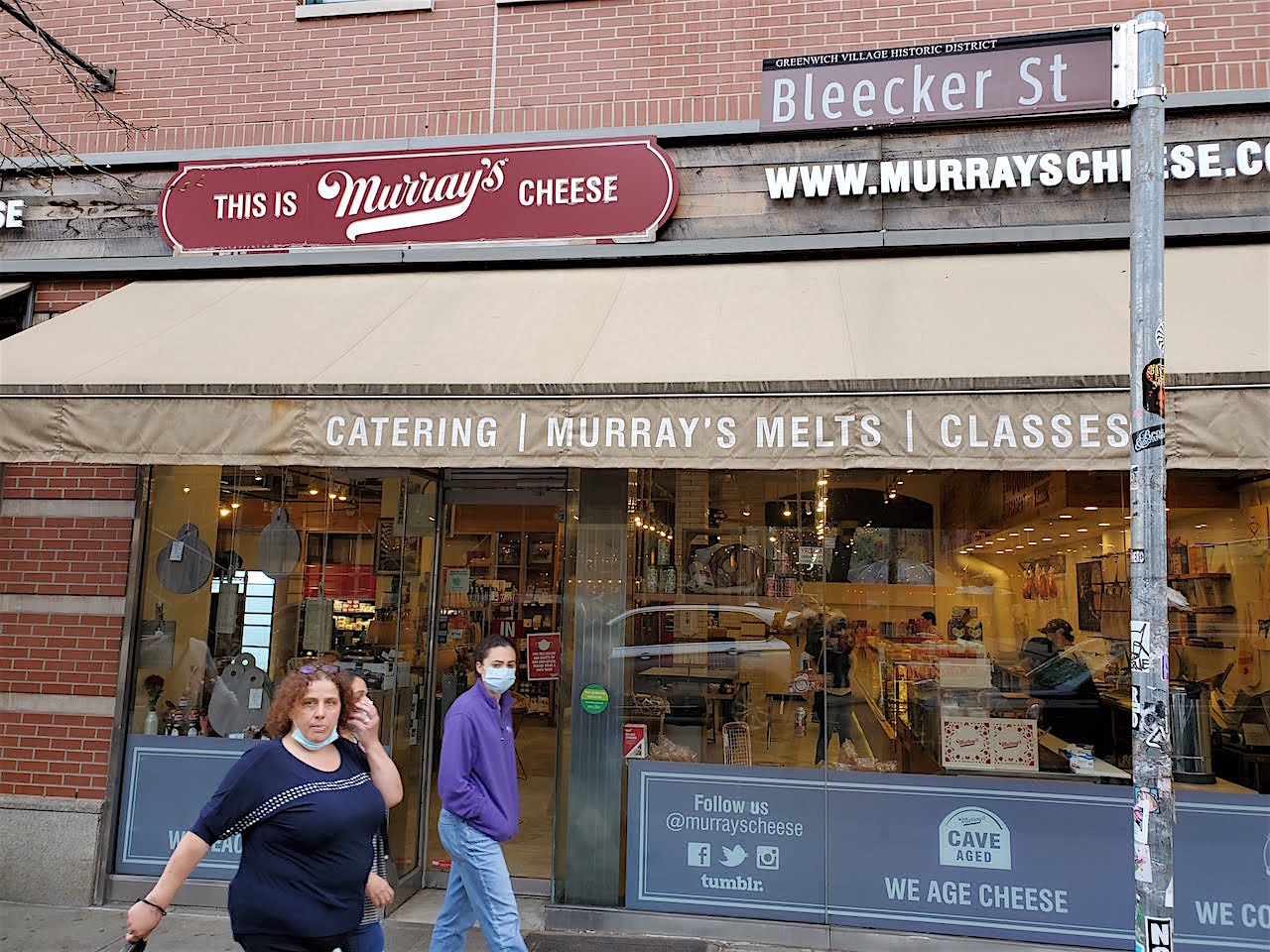BY THE VILLAGE SUN | Like an overripe Gorgonzola, something just didn’t smell right to journalist Andrew Silverstein about parts of the Murray’s Cheese origins story.
And, after doing research, it turns out he was right. In his piece in the Forward this month, the Murray’s Cheese creation tale crumbles like a hunk of dried-out goat cheese.
In his article, “Is the legend of Murray’s Cheese only a myth?” Silverstein debunks the story that Murray Greenberg fought in the Spanish Civil War in the 1930s, battling the forces of fascist General Francisco Franco.
A loyal customer of the Bleecker St. store, the writer realized the story — recounted to him by a Murray’s counterman and also found on the store’s “About” page — simply seemed too unlikely.
“Could it be possible that less than a year after Franco’s victory, Murray opened New York’s cheese shop par excellence? It was like discovering Eli Zabar was a Navy Seal,” Silverstein writes.
“…Murray’s Cheese representatives could only point to ‘oral tradition’ as their source. So I interviewed Murray’s son Allen Greenberg, former employees, his successor and customers. I combed through decades-old news clippings, consulted the Abraham Lincoln Brigade Archives, and tracked down immigration, census and other historical documents.
“In the end,” Silverstein writes, “I can say Murray Greenberg (born Moische Schuchelmann) was not a Spanish Civil War veteran nor was he a radical. During the years of the war, Murray was selling pickles and herring at his family’s appetizing store on the Lower East Side, not gunning down fascists in the Pyrenees. As for all those Murray’s Cheese “Est. 1940” totes, there wasn’t a Murray’s Cheese until the 1960s.”
The article quotes a John Jay professor, who notes of the false history, “It’s a bit of a manufactured romanticism — and saying he’s a Communist lends additional authenticity.”
It turns out the bogus backstory was promoted by Robert Kaufelt, who bought the business in 1991 and transformed it into an upscale destination shop. Kaufelt sold the store five years ago.
From humble beginnings in the Village, Murray’s Cheese today is fully owned owned by Kroger, the nation’s largest supermarket chain, and has 750 locations in more than 30 states.


This is a pretty shoddy piece of journalism, without any discussion with me about how Murray’s came to be, and what it became, and as a long time resident of the Village, I find it offensive. Next time do your homework.
Meanwhile, I wrote my own piece at the request of the Journal, which they published. Saving Murray’s, which was going out of business, was a labor of love not only for me but, I hope, for the neighborhood, which loses its iconic shops regularly. Especially now, post-Covid. People who save our shops should be celebrated, not scorned!
https://forward.com/culture/467727/my-life-as-the-big-cheese-at-murrays/
I’m a big boy, so he, or any reporter, can write what he wants. There are those in our town who always get a ‘bye’ and about whom nothing negative is ever said or written, but they’re rare and I always wonder why the reporter is hanging back. That was not me, however.
In my case, Frankie from Malta (where he returned) worked for both of us – he came with the shop you might say — so I wonder if he knew the full story, or indeed, if he told me the one I thought was the true history. Since I didn’t make it up, it had to come from somewhere, and Murray’s was dead and gone when I got there. None of the family, except an early visit from his widow, ever came by as far as I know.
And my background in groceries, especially dairy, was more like the business I bought than what it became. That was the market changing as the Village became more gentrified, more food oriented. And Cornelia was a central point of that, a ground zero, with Mario’s Po and David Page’s Home and Rebecca and Mary reinventing the lobster roll at Pearl.
That was a key point, I think: Just like the earlier fermentation in the Village in art and music and poetry, so was it now food’s turn, and even post-Covid we still have an amazing assortment of restaurants. But perhaps the retail has not kept pace, there are no Balducci’s, Agata (just closed), Dean and Delucca, all gone, but Gristedes is still standing.
It’s hard to survive; I was lucky that way, but it was also love of the food and a lot of hard work. But as stated, that’s not the angle he was playing. Had I had the real story, that’s the one I would have told. And the shop itself: That was real, and that’s why Kroger wanted to buy it, and finally did.
Robbie Kaufelt